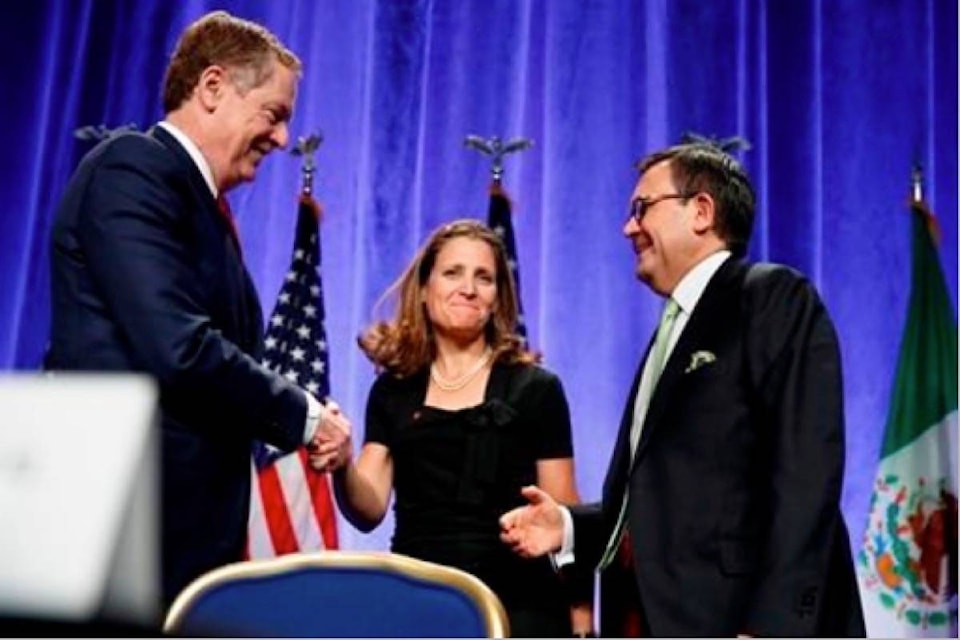WASHINGTON — Early indications are pointing to a potential No. 1 priority for the U.S. in a renegotiated NAFTA: automobiles.
It’s the specific issue that was mentioned first, at greatest length, and in most detail by Donald Trump’s trade czar as talks got underway Wednesday.
Robert Lighthizer pointed to the carnage in the manufacturing sector as the reason so many Americans view NAFTA as a failed agreement.
“Thousands of American factory workers have lost their jobs because of these provisions,” Lighthizer said in his opening remarks.
This morning, @USTradeRep Ambassador Robert Lighthizer delivered an opening statement at the first round of #NAFTA renegotiations. pic.twitter.com/8h21Ednskf
— Department of State (@StateDept) August 16, 2017
He cited priorities for the sector, designed to boost production of parts in North America, and in the United States.
Industry members are warning Lighthizer to handle the matter with care as the details are complicated, and any wrong moves could either drive up vehicle prices.
There’s also a risk that changes could make North American producers less competitive, or even force them to just ignore the new rules and simply pay a tariff that would be passed along to consumers.
Lighthizer listed four priorities for the sector:
— A higher North American content requirement to avoid a tariff. The current rule of origin calls for 62.5 per cent of a car’s parts to be made in North America.
— Substantial U.S. content in cars. It was unclear whether he was advocating a new, specific requirement for U.S. content — a move that would surely be controversial — or whether he was simply stating that the desired changes should positively affect the region, with more cars being made in the U.S.
— Stricter monitoring to make sure companies comply with the rules of origin. Lighthizer said country of origin “should be verified, not deemed.” Labour provisions should be included in the agreement and be as strong as possible.
— Tougher labour standards. Some insiders in Canada and the U.S. suggest better worker conditions in Mexico, and more pay, would not only be good for Mexicans but also for making non-Mexican production more cost-effective and preserving vehicle production in Canada and the U.S.
A Canadian auto-industry representative at the talks said he’s not worried by what he heard: “There’s no anxiety about it with us,” said Flavio Volpe, president of the Automotive Parts Manufacturers’ Association.
For example, Volpe interpreted Lighthizer’s words to mean that he’s hoping for more production in the U.S. as a spinoff effect of a stronger North American industry, not as a demand that plants move there from other countries.
But he urged negotiators to be very careful when touching the current rules. He warned of ample possibilities for unintended consequences.
“It’s not simple,” Volpe said. ”If you make it too onerous, does a company or supplier say, ‘Forget about compliance. I’ll just pay the tariff.’”
That means production would actually shift abroad: companies would simply pay the tariffs, ranging from 2.5 to 6.1 per cent, as a cheaper alternative to following complicated new rules.
It’s also risky to try requiring companies to produce certain products at home, Volpe added: some industries that produce certain types of electronics for automobiles simply don’t exist in North America.
Happy to sit down with Secretary @ildefonsogv in #Washington to discuss the strong ties between Canadians & Mexicans. #cdnpoli #NAFTA pic.twitter.com/y7HFtXMiMF
— Chrystia Freeland (@cafreeland) August 16, 2017
Finally, damaging Mexican competitiveness can boomerang on companies from the other countries.
He said Canadian auto-parts companies have 43,000 employees in Mexico.
Alexander Panetta, The Canadian Press



